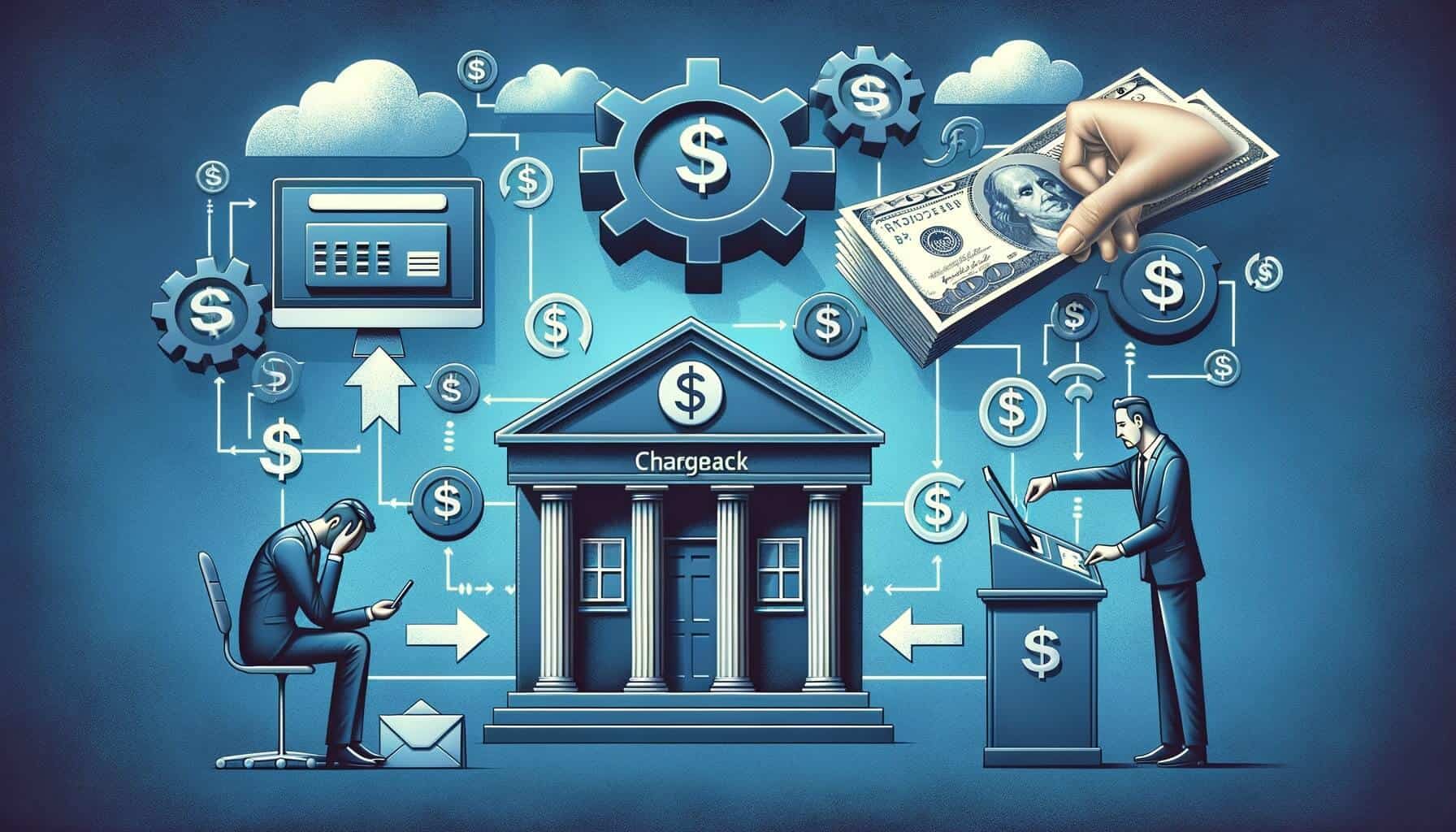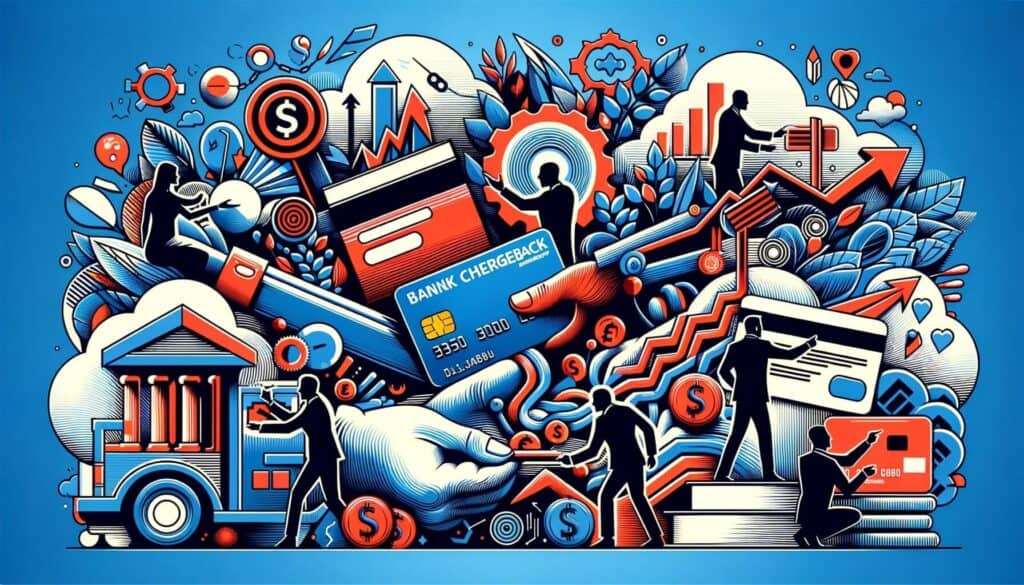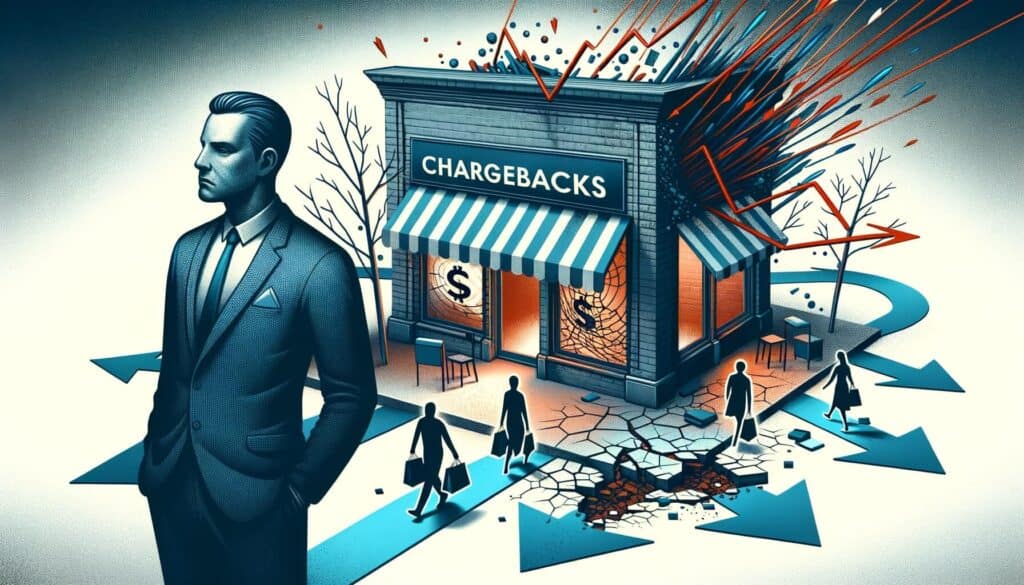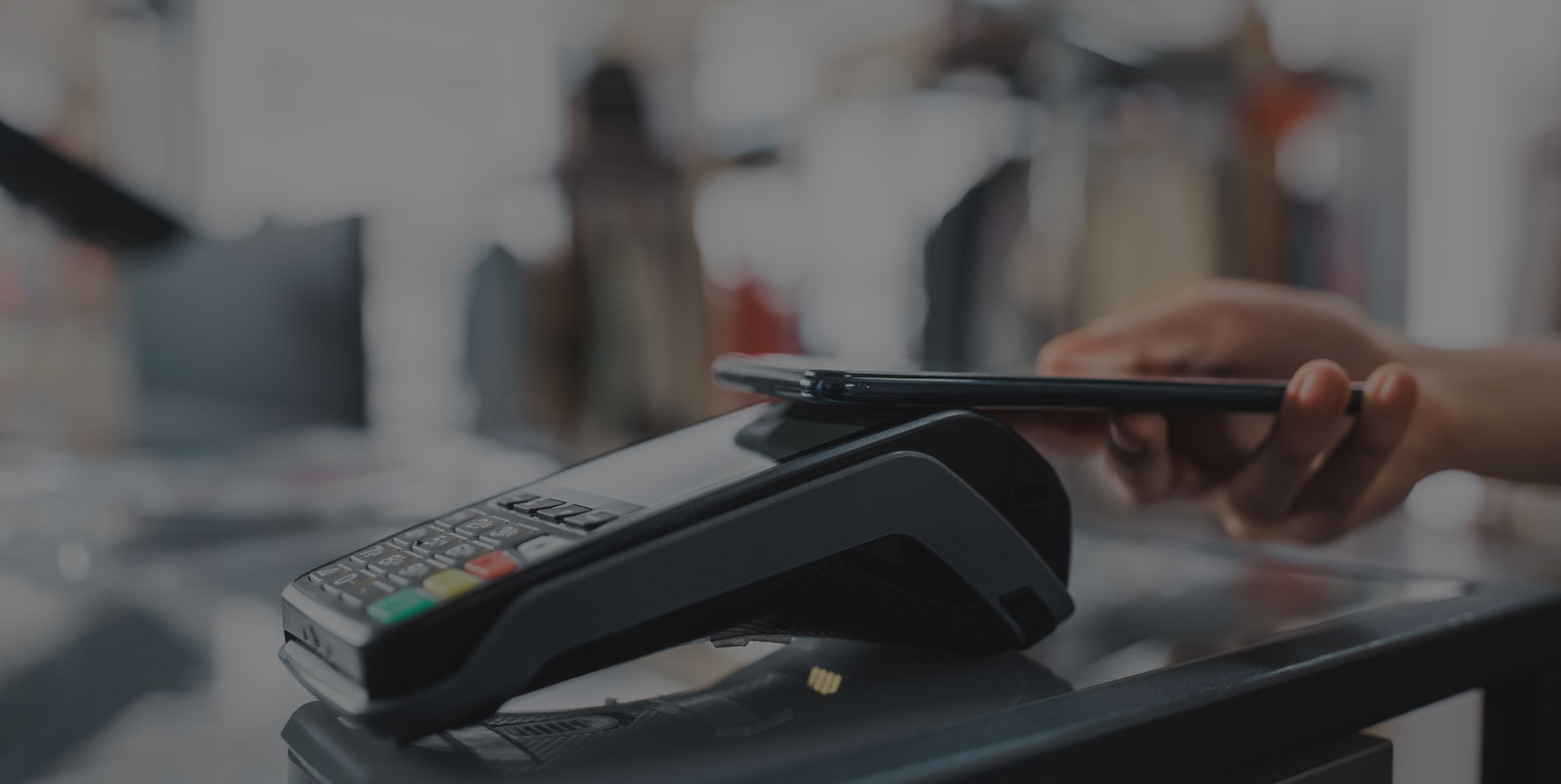
By Cindy Gardea January 13, 2025
In today’s digital age, where online transactions have become the norm, the concept of bank chargebacks has gained significant importance. A bank chargeback refers to the process of reversing a transaction and returning funds to a customer’s account. It is a mechanism designed to protect consumers from fraudulent or unauthorized transactions, as well as to resolve disputes between customers and merchants.
In this comprehensive article, we will delve into the various aspects of bank chargebacks, including their types, the process of initiating them, common reasons for their occurrence, their impact on merchants, and how to prevent them.
Understanding the Concept of Chargebacks
A chargeback is essentially a consumer protection mechanism provided by banks and credit card companies. It allows customers to dispute a transaction and request a refund if they believe they have been a victim of fraud, received a defective product, or experienced any other issue with a purchase. Chargebacks are governed by the rules and regulations set forth by card networks such as Visa, Mastercard, and American Express, as well as by individual banks.
When a customer initiates a chargeback, the bank or credit card company investigates the claim and, if found valid, reverses the transaction and credits the customer’s account. The funds are then deducted from the merchant’s account, along with additional chargeback fees. It is important to note that chargebacks are not a substitute for customer service or a means to obtain a refund without following proper channels. They should only be used as a last resort when all other avenues have been exhausted.
Types of Bank Chargebacks

Bank chargebacks can be categorized into several types, each with its own specific characteristics and reasons for occurrence. The most common types of chargebacks include:
1. Fraudulent Chargebacks: These occur when a customer claims that their credit card was used without their authorization. It could be a result of stolen card information, identity theft, or a simple case of the customer denying making the purchase.
2. Non-Receipt Chargebacks: In this type of chargeback, the customer claims that they did not receive the product or service they paid for. It could be due to a delayed delivery, lost shipment, or any other issue that prevents the customer from receiving the purchased item.
3. Defective or Not as Described Chargebacks: Customers may initiate this type of chargeback when they receive a product that is significantly different from what was advertised or described. It could be a case of false advertising, misleading product information, or receiving a damaged or faulty item.
4. Subscription or Membership Chargebacks: These chargebacks occur when a customer claims that they were charged for a subscription or membership they did not authorize or wish to continue. It could be a result of unclear terms and conditions, hidden fees, or difficulty in canceling the subscription.
5. Duplicate Chargebacks: This type of chargeback occurs when a customer is mistakenly charged multiple times for the same transaction. It could be due to a technical glitch, human error, or a failure in the payment processing system.
The Process of Initiating a Bank Chargeback

Initiating a bank chargeback typically involves a series of steps that customers need to follow to ensure their claim is properly investigated and resolved. The process may vary slightly depending on the bank or credit card company, but generally follows these steps:
1. Contact the Merchant: Before initiating a chargeback, customers are advised to first contact the merchant and attempt to resolve the issue directly. This could involve requesting a refund, exchanging the product, or resolving any other dispute.
2. Gather Evidence: To support their claim, customers should gather all relevant evidence, such as receipts, order confirmations, emails, and any other documentation related to the transaction. This evidence will be crucial during the chargeback investigation.
3. Contact the Bank or Credit Card Company: If the issue remains unresolved, customers can contact their bank or credit card company to initiate the chargeback process. This can usually be done through a phone call, online banking portal, or by filling out a chargeback request form.
4. Provide Details and Evidence: During the chargeback request, customers will be required to provide detailed information about the transaction, including the date, amount, and reason for the dispute. They will also need to submit the gathered evidence to support their claim.
5. Investigation and Resolution: Once the chargeback request is submitted, the bank or credit card company will initiate an investigation. They will review the evidence provided by the customer and may also contact the merchant for their side of the story. Based on the findings, a decision will be made to either approve or deny the chargeback.
6. Refund or Reversal: If the chargeback is approved, the customer’s account will be credited with the refunded amount. The funds will be deducted from the merchant’s account, along with any applicable chargeback fees. If the chargeback is denied, the customer will be notified and may have the option to escalate the dispute further.
Common Reasons for Bank Chargebacks

Bank chargebacks can occur for a variety of reasons, and understanding these reasons is crucial for both customers and merchants. Some of the most common reasons for chargebacks include:
1. Unauthorized Transactions: Customers may initiate chargebacks if they notice unauthorized transactions on their credit card statements. This could be a result of stolen card information, identity theft, or a compromised account.
2. Fraudulent Activity: Chargebacks can also occur when customers become victims of fraudulent merchants or scams. This could involve purchasing counterfeit goods, falling for phishing scams, or being charged for products or services that were never delivered.
3. Dissatisfaction with Product or Service: Customers may initiate chargebacks if they are dissatisfied with the quality of a product or the level of service provided by a merchant. This could include receiving damaged or defective items, poor customer service, or not receiving the promised benefits of a product or service.
4. Billing Errors: Chargebacks can occur due to billing errors, such as being charged the wrong amount, being double-charged for a transaction, or being charged for a subscription or membership that was canceled.
5. Subscription or Membership Issues: Customers may initiate chargebacks if they are unable to cancel a subscription or membership, or if they continue to be charged for a subscription they no longer wish to continue.
Impact of Bank Chargebacks on Merchants

While bank chargebacks are designed to protect consumers, they can have a significant impact on merchants, especially small businesses. When a chargeback is initiated, the funds from the disputed transaction are immediately deducted from the merchant’s account, along with additional chargeback fees. This can result in financial losses for the merchant, as well as damage to their reputation and credibility.
Furthermore, excessive chargebacks can lead to increased scrutiny from banks and credit card companies, potentially resulting in higher processing fees, stricter regulations, or even the termination of the merchant’s account. Merchants may also face penalties or fines if they are found to be in violation of the card network’s rules and regulations.
To mitigate the impact of chargebacks, merchants are encouraged to maintain a high level of customer service, clearly communicate their refund and return policies, and promptly address any customer concerns or disputes. They should also implement fraud prevention measures, such as verifying customer information, using secure payment gateways, and monitoring transactions for suspicious activity.
How to Prevent Bank Chargebacks
Preventing bank chargebacks is crucial for both customers and merchants, as they can be time-consuming, costly, and detrimental to business operations. While it is impossible to completely eliminate chargebacks, there are several proactive measures that can be taken to minimize their occurrence. Some effective strategies for preventing chargebacks include:
1. Clear Communication: Merchants should ensure that all product descriptions, terms and conditions, refund policies, and contact information are clearly communicated to customers. This will help set realistic expectations and minimize misunderstandings or disputes.
2. Excellent Customer Service: Providing exceptional customer service is key to preventing chargebacks. Merchants should promptly respond to customer inquiries, address concerns or complaints, and strive to resolve any issues before they escalate to a chargeback.
3. Secure Payment Processing: Merchants should use secure payment gateways and implement fraud prevention measures to protect customer data and prevent unauthorized transactions. This includes using encryption technology, requiring strong passwords, and monitoring transactions for suspicious activity.
4. Accurate Product Descriptions: Merchants should ensure that their product descriptions are accurate and provide a clear representation of the product or service being offered. This will help manage customer expectations and reduce the likelihood of chargebacks due to dissatisfaction with the product.
5. Transparent Refund and Return Policies: Merchants should clearly communicate their refund and return policies to customers, including any applicable fees or conditions. This will help customers make informed decisions and reduce the likelihood of chargebacks due to misunderstandings or dissatisfaction.
6. Order Confirmation and Tracking: Merchants should provide customers with order confirmations and tracking information for shipped items. This will help establish proof of delivery and minimize chargebacks related to non-receipt of goods.
Resolving Disputes and Reversing Chargebacks
In some cases, disputes between customers and merchants can be resolved without the need for a chargeback. If a customer is dissatisfied with a purchase or has a dispute with a merchant, they should first attempt to resolve the issue directly with the merchant. This can be done through communication channels such as email, phone, or live chat.
If the issue remains unresolved, customers can escalate the dispute to their bank or credit card company. The bank will then initiate an investigation and review the evidence provided by both parties. If the bank finds in favor of the customer, a chargeback will be initiated, and the customer will be refunded. However, if the bank finds in favor of the merchant, the customer will be notified, and the dispute will be considered closed.
It is important to note that reversing a chargeback can be a complex and time-consuming process. Merchants who believe a chargeback has been initiated unfairly or in error can provide evidence to their bank or credit card company to support their case. This evidence may include proof of delivery, customer communication records, or any other relevant documentation. If the bank finds the evidence compelling, they may reverse the chargeback and credit the merchant’s account.
Frequently Asked Questions
Q1. What is a bank chargeback?
A bank chargeback refers to the process of reversing a transaction and returning funds to a customer’s account. It is a mechanism designed to protect consumers from fraudulent or unauthorized transactions, as well as to resolve disputes between customers and merchants.
Q2. How does a chargeback work?
When a customer initiates a chargeback, the bank or credit card company investigates the claim and, if found valid, reverses the transaction and credits the customer’s account. The funds are then deducted from the merchant’s account, along with additional chargeback fees.
Q3. What are the common reasons for chargebacks?
Common reasons for chargebacks include unauthorized transactions, fraudulent activity, dissatisfaction with a product or service, billing errors, and subscription or membership issues.
Q4. How can merchants prevent chargebacks?
Merchants can prevent chargebacks by maintaining clear communication, providing excellent customer service, using secure payment processing, ensuring accurate product descriptions, and implementing transparent refund and return policies.
Q5. Can chargebacks be reversed?
Chargebacks can be reversed if the merchant provides compelling evidence to support their case. This evidence may include proof of delivery, customer communication records, or any other relevant documentation.
Conclusion
Bank chargebacks play a crucial role in protecting consumers and resolving disputes in the digital marketplace. Understanding the concept of chargebacks, their types, and the process of initiating them is essential for both customers and merchants. By implementing proactive measures to prevent chargebacks and providing exceptional customer service, merchants can minimize their impact on their business operations.
Resolving disputes and reversing chargebacks can be a complex process, but with proper evidence and communication, it is possible to achieve a fair resolution. Ultimately, the goal is to strike a balance between consumer protection and maintaining a healthy business environment for merchants.
